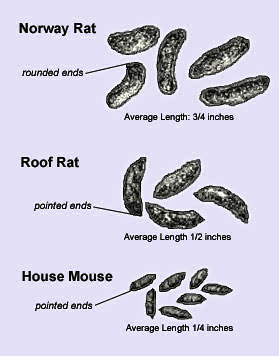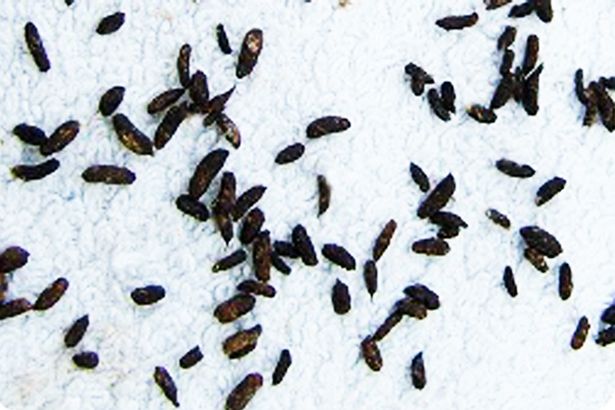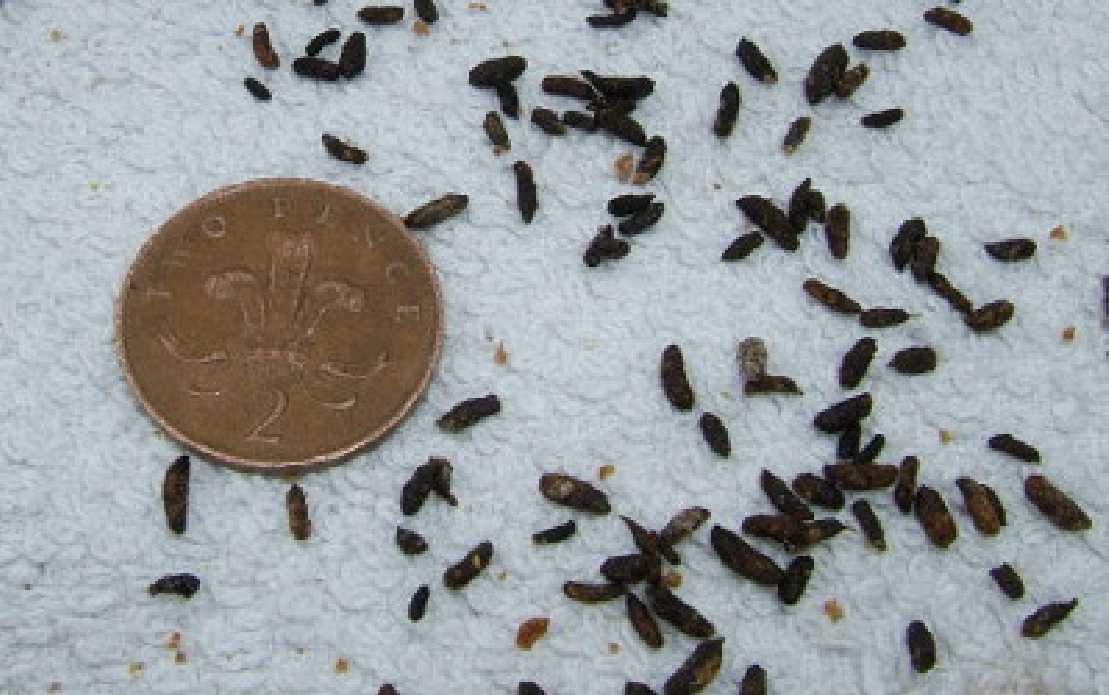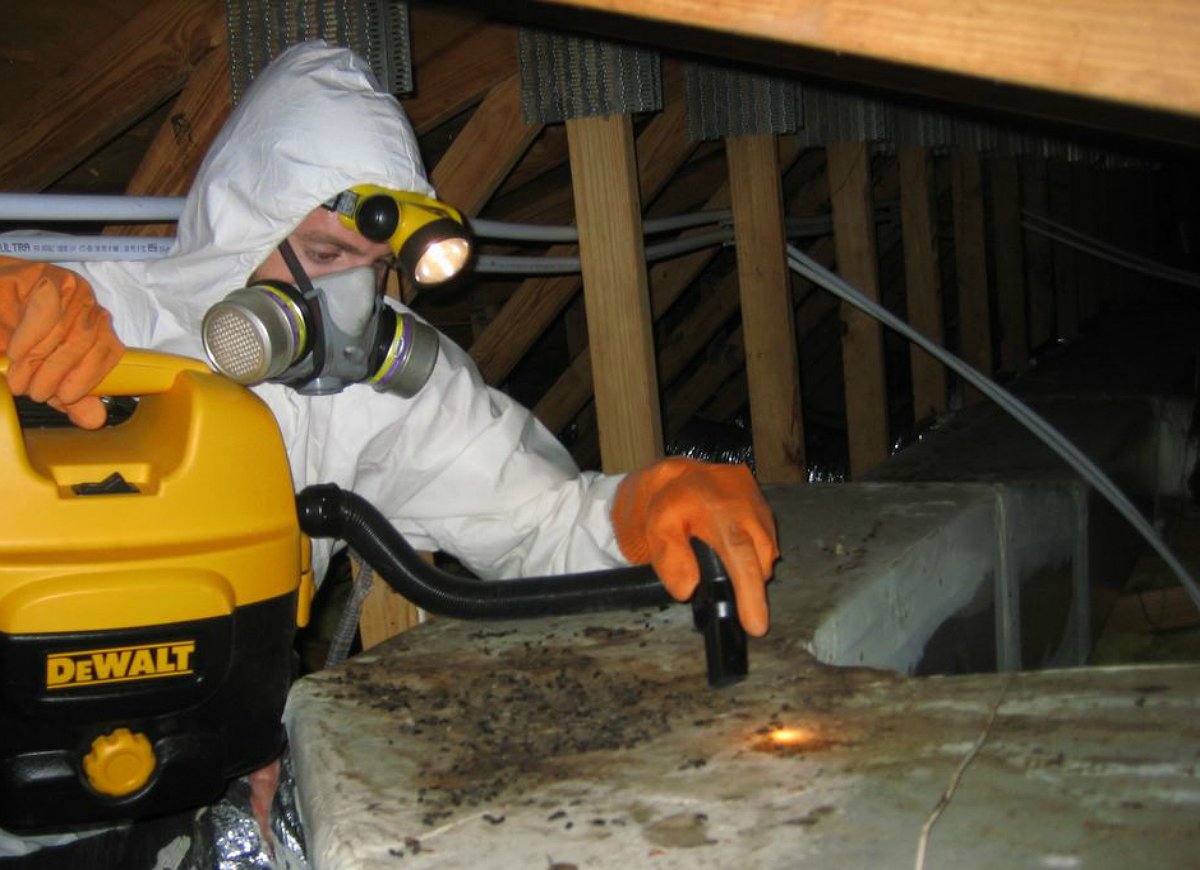How To Identify & Clean Mouse Droppings
Contents
How To Identify And Clean Mouse Droppings
When mice have invaded your home, it is rare that the first sign of the infestation is a sighting of the actual rodents. This is largely because they are nocturnal and prefer to stay hidden.Often, the first indication that a homeowner will find is droppings (feces). This is typically a telltale sign that you have mice living in your home, and should take proper action to deal with the infestation.
But how can you be sure that the droppings you’ve found are from mice, and not some other rodent? Possibly an altogether different type of mammal?
Let’s find out!
Identify Mouse Droppings
Mouse droppings are approximately 3/16 to 1/4 inch long and 1/16 of an inch in diameter. Each pellet will be similar to a grain of rice with pointed ends, and be of a shade of brown that varies depending on how old the dropping is. Fresh droppings are darker brown (almost black), and gradually lighten over the next 3 days or so.
A mouse will usually leave behind between 50 and 75 pellets per day, so the amount that you are finding can help you determine the size of the infestation that you are dealing with.
If picked up (with gloves, never bare hands!), mouse droppings are relatively soft and will usually not crumble unless they are old.
Although it is feces, the smell is often subtle or completely undetectable to humans. Mouse urine, on the other hand, can leave behind a strong ammonia smell.
Pictures Of Mouse Droppings
Animals With Similar Droppings
Mouse droppings are often confused for the droppings of other animals, either rodents or non-rodents.
Here are brief descriptions of the droppings of other common household pests.
Rat
There are 2 primary types of rats that invade homes.Roof Rats – Droppings approximately 1/2 inch long, and 3/16 wide, with pointed ends. Similar to mouse droppings, but larger.
Norway Rats – Even larger than roof rat droppings, and more rectangular with rounded ends rather than pointed.
Squirrel
Squirrel droppings are approximately 3/8 in an inch long, and 1/8 wide. Similar to mouse droppings, but slightly longer and thicker. Also more likely to turn a lighter color as it dried out.
Bat
Very similar to mouse droppings, and often confused with each other. There are two key differences which can help you determine if your pests are mice or bats.
First, bat droppings are usually close together rather than scattered around. This is because most of the droppings (called guano) will collect below where the bat roosts. Second, bat droppings often have a slightly speckled or sparkly appearance, due to the insect wings that the bats consume. Bat guano also has a very distinct smell which is hard to describe, but is nothing at all like that of mouse droppings.
Chipmunk
Somewhat similar to mouse droppings, but larger. Dark in color, and similar in shape to large grains of rice or small beans.
Rabbit
Rabbits actually produce 2 distinct types of droppings, neither of which is similar to mouse droppings.
Fecal pellets are round and dry, and are the normal droppings that rabbits leave behind. They also produce wet, smelly balls known as cecotropes. These are less common to be seen, even by those who own rabbits at pets, because they are actually eaten by the rabbit as soon as they are produced.
Raccoon
Droppings similar to that of a small dog, not at all like that of a mouse.
Cockroaches
Very small droppings which are too small to be confused for that of mice. Similar in appearance to black pepper or coffee grounds.
Are Mouse Droppings Dangerous?
Yes, absolutely! Mouse droppings are capable of spreading upwards of 30 different diseases of illnesses, and should not be handled without proper care.
Thick, non-absorbent gloves and a respirator should be worn when handling mouse droppings.
In case of accidental ingestion, either through eating contaminated food or a child eating droppings, a doctor must be seen immediately.
Partial List Of Diseases Spread Via Rodent Droppings
- Hantavirus Pulmonary Syndrome
- Hemorrhagic Fever with Renal Syndrome
- Lassa Fever
- Leptospirosis
- Lymphocytic Chorio-meningitis (LCM)
- Rat-Bite Fever
- Salmonellosis
- South American Arenaviruses
- Tularemia
Pets
Household pets, especially dogs, can are also in danger if there are mice in the house.
Not only can dogs catch diseases from mouse droppings, but they can also get fleas or even be bitten directly by a mouse.
How To Clean Up Mouse Droppings
Here is a guide directly from the CDC website on cleaning up after rodents:
When you begin cleaning, it is important that you do not stir up dust by sweeping or vacuuming up droppings, urine, or nesting materials.
- Wear rubber, latex, or vinyl gloves when cleaning urine and droppings.
- Spray the urine and droppings with a disinfectant or a mixture of bleach and water and let soak 5 minutes. The recommended concentration of bleach solution is 1 part bleach to 10 parts water. When using a commercial disinfectant, following the manufacturer’s instructions on the label for dilution and disinfection time.
- Use a paper towel to pick up the urine and droppings, and dispose of the waste in the garbage.
- After the rodent droppings and urine have been removed, disinfect items that might have been contaminated by rodents or their urine and droppings.
Next, clean and disinfect the whole area
- Mop floors and clean countertops with disinfectant or bleach solution.
- Steam clean or shampoo upholstered furniture and carpets with evidence of rodent exposure.
- Wash any bedding and clothing with laundry detergent in hot water if exposed to rodent urine or droppings.
Lastly, remove gloves, and thoroughly wash hands with soap and water (or use a waterless alcohol-based hand rub when soap is not available and hands are not visibly soiled).
Do Mouse Droppings Always Indicate An Infestation?
Mouse droppings certainly indicate that there were in your house at some point, but it’s important to know if they are still there.
The color and hardness of the droppings goes a long way in determining how fresh it is. Wetter and darker droppings are fresh, probably less than a day old. Lighter brown droppings which have dried out are older, perhaps 3 days. If the droppings are gray, it means they are very old.
One sure-fire way to tell if you still have mice around is to simply clean up the droppings, using the advice stated above. If new droppings appear, then you still have a mouse infestation.
Non Toxic Spray
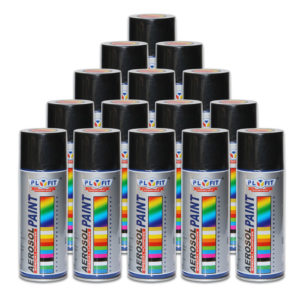
This non-toxic spray kills larvae, eggs, and adult insects by breaking down their exoskeleton. It is safe to spray around the home and works only on the insects. Feel good about spraying indoors around pets, plants and children.
All Natural Non Toxic Insect Killer Spray by Killer Green

